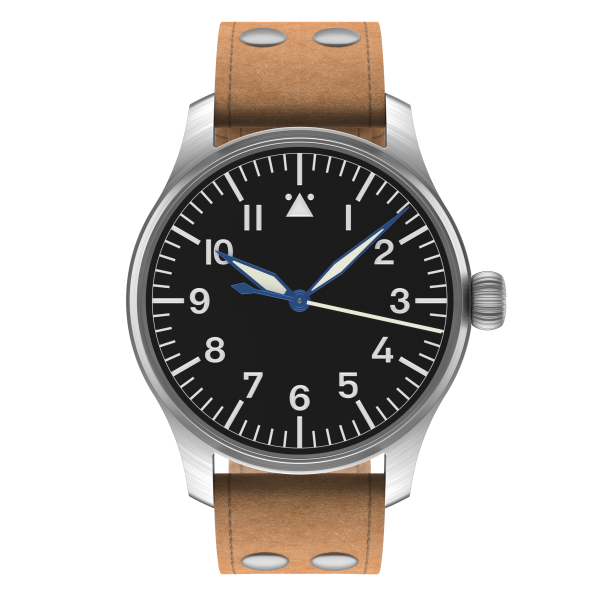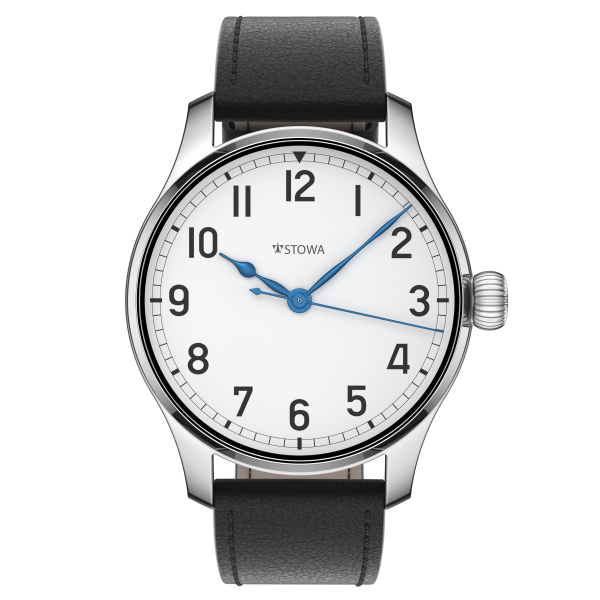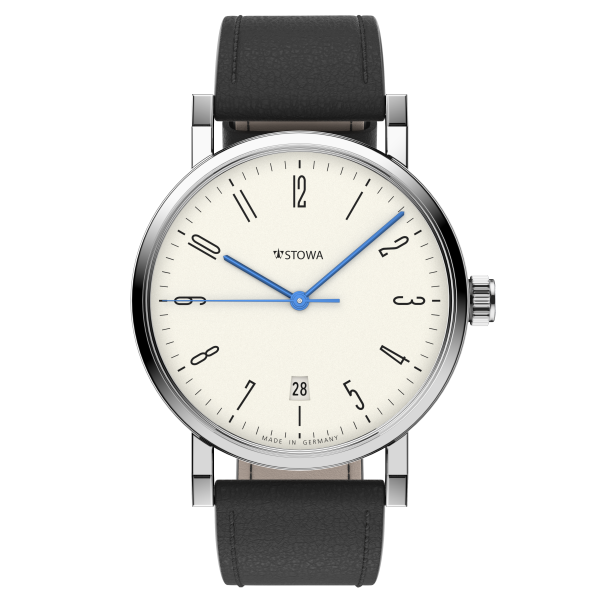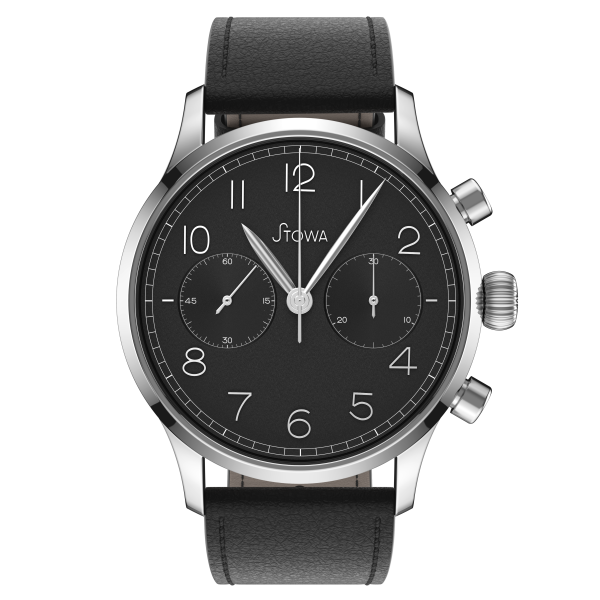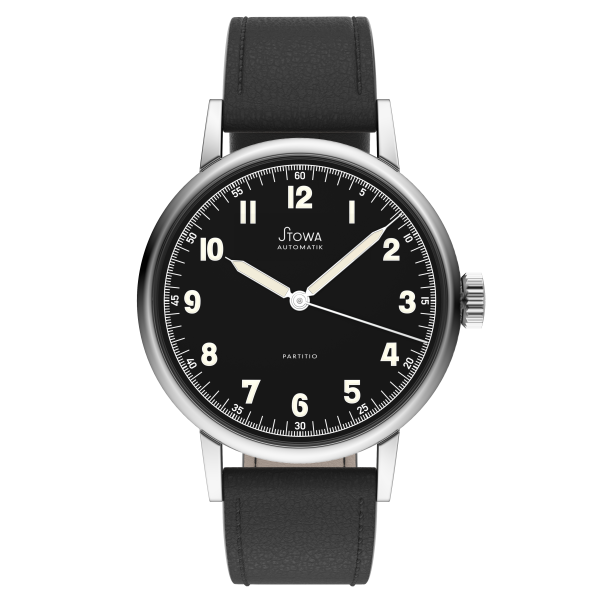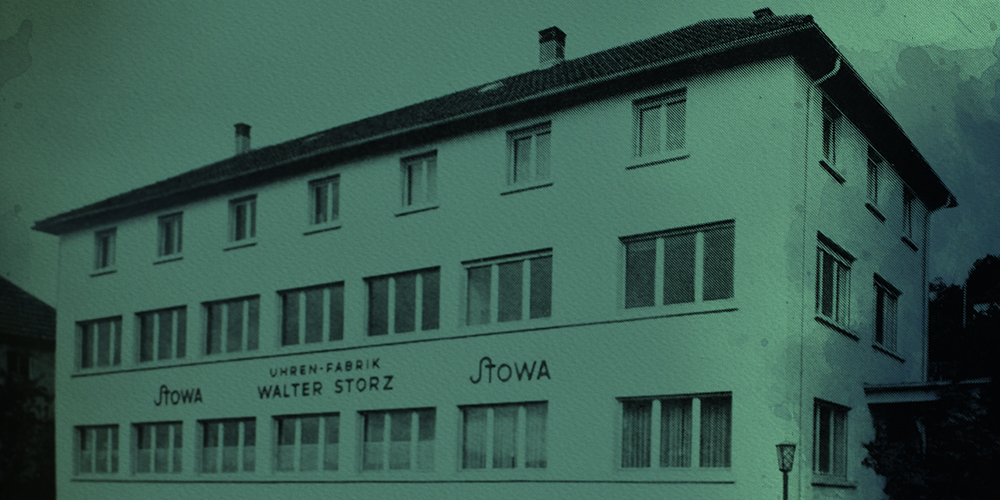Historical watches
Future needs origin, as Odo Marquard already said. STOWA's in-house museum is impressive proof of this. More than 70 (of a total of several hundred old watches in the inventory) show a cross-section of STOWA's creative power. Step by step, these watches are now also shown and described here in the virtual museum. Some texts are linked with additional information. Mostly, after clicking on a picture, you will get another, larger and more detailed additional picture. Let yourself be inspired by the historical STOWA watches. Then as now, the watches convince with a beautiful, balanced and simple design and a great attention to detail.
1973 – Digital Automatic
We are in the age of the quartz crisis, which lasted from about 1970 to the mid-1980s and had led to the almost complete displacement of mechanical watches, by then novel electronic watches with quartz technology. Around 1970, mechanical "digital watches" were developed in response to electronic digital watches. This development is also reflected in the design of the STOWA Digital Automatic, which was created around 1973. Since the mechanical watches were very high and costly, among other things, because of the "digital design", they could not prevail. Disc watches were fully in vogue, preferably in combination with the largest possible case.
1936 – Antea KS roségold
The Antea. Inspired by Bauhaus. Since about 1937, STOWA has been building watches in the so-called Bauhaus style - minimalistic and timeless. Collector's hearts beat faster with the Antea KS Roségold, the watch has a rare color combination: Roman copper dial in a chrome-plated case.
1950s - Parat Pointer Date
The 1950s - a decade that produced many beautiful watches. The "German watch cooperation Parat" was an association of the companies STOWA, Osco, Arctos, Para and Berg and was founded in 1949. Under this cooperation, the model was created in a period between 1949 - 1953. It is in a chrome case and bears hands covered with luminous material. Inside ticks a handwound movement cal. Osco 42 (CLD) with 15 jewels. The original retail price was 52 DM at that time.
1965 – Memotime
It was hated: the parking meter. Almost 70 years ago, the first German "Parkographs" were installed to keep long-term parkers out of city centers. Memotime promised a remedy: after setting the desired time, it reminded the driver of the expiring parking time and thus helped to avoid fines. "Memo-Time" was registered as a word and figurative mark on June 13, 1959.
1965 – Chrono
The 1960s. Simple classics. A chronograph (ancient Greek literally for "time recorder") is an analog wristwatch with the additional functionality of a stopwatch. In the sixties, the dials were very reduced. This was implemented not only in normal three-hand watches, but of course also in the chronographs of the time.
1965 – Mini-Park
The "Mini-Park" is a STOWA watch with an automatic movement and a complication of its namesake.
In the center of the dial there is a curved bar that shows the elapsed time. At the 12 o'clock position, there is a numeric wheel that shows the elapsed minutes. This complication should help in not risking parking tickets when using parking meters in the city. The function is activated by a pusher at the 2 o'clock position.
1940s – Flieger Baumuster „A“
In the history of watch development, it turned out that the elegant gesture of pulling the watch out of the pocket was not practical in every situation. For example, when flying an airplane, it was necessary to be able to use both hands and look at the watch at the same time. The first pilot's watch was born. Its popularity has to do with its distinctive design and this, in turn, with its eventful history. The focus was on minimalistic design through simple but very legible typography on the dial and best legibility, even in low light conditions. STOWA was one of the few pilot watch manufacturers to build these watches. Thanks to their enormous recognition value, they still enjoy great popularity today.
1936 – Extra
The height of the 1920s was followed by a dark era in German history. Watches from the 1930s, such as this dress watch in the so-called Bauhaus style, keep this history in mind: the heyday of the watch industry ended only once, on September 1, 1939, with the start of World War II. The accompanying economic bottlenecks influenced the purchasing behavior of the population and also caused financial difficulties for watch manufacturers.
1940s – Sport
A characteristic military-inspired timepiece.
The military seal of approval was a guarantee of quality and precision. These were used for timing troop movements. Although they had the required precision, they first had to be converted from pocket watches to wristwatches so that soldiers could read them quickly and easily.
1969 – Convertible
The STOWA travel watch from 1968. STOWA has made many of these reliable travel companions. The case was partly made of very high quality leather. The sliding mechanism of the case was very innovative at that time. The word and picture mark " STOWA Convertible " was registered by Walter Storz / Uhrenfabrik STOWA GmbH on 7.12.1956.
1973 – Table Clock Digital
The 1970s had a lot to offer: A few beautiful watch models were produced as well.
Right: Table Clock Digital
In the beginning, table clocks were only common in monasteries to indicate prayers or were used by the doorman to strike the bells at the exact time. Later, they were often used on desks in offices. The diagonally arranged dial served for better readability.
Left: Memo-Time Parking Watch
The rise of new technologies was intended to make life easier and more convenient. Convenience was the order of the day, even when it came to watches. The 60-minute timer was advertised as useful for a variety of situations, even beyond feeding the parking meter on time. It could be used for appointments, conferences, and for all kinds of timekeeping in the home. It entered the watch market in 1959.
1976 – Automatic Meeting Remember AS 5008
The groove of the seventies: The AS 5008 movement from A. Schild in Switzerland is the top model of this movement family, with day and date indication at 3 o'clock and automatic winding for both the movement and the alarm. The AS 5008 movement is antimagnetic and shock resistant.
clearly designed and easy to read.
1968 – Big Eye Chronograph
The pandal look chronograph from the late 60s, early 70s - a rare beauty!
At 39 mm x 45 mm, the case is larger than usual at the time.
Included: Valjoux 7733 movement (which was introduced in 1969) with sliding block start, stop and zero functions. With matte black dial and the red "Regatta" markers on the chronograph, minute sub-dial and tritium indexes and white oversized or "Big Eyes" dials.
1968 – Seatime Electric
The 1960s and 70s produced a special wealth of original and extravagant designs, but most of them have been forgotten today.
In the early 1960s, Werner Storz, the son of the company's founder, joined the company. The product name STOWA Seatime, a forerunner of our current Seatime series, was copyrighted in 1963.
1930s – Pocket Watch
Watches were relatively large at the time and for this reason were often kept on chains in the vest pocket. They were also far from having reached the masses of the population, but adorned aristocrats as costly luxury items. In the 15th century, the balance wheel and, above all, the hairspring were finally created, enabling the construction of more precise and, above all, smaller watches.
Blued steel hands turn in front of the emphatically businesslike dial with railroad minute track. The 16½-ligne hand-wound movement with a height of 4.5 millimeters was made by the Swiss manufacturer Unitas. It bears the caliber designation 285.
Dial design
How the face of the watch is created...
A beautiful dial design is the initial spark for further and deeper engagement with a watch. The first emotional moment decides whether a watch will ultimately find its way to the wrist of the watch lover. In the past, the responsibility of the design was with the dial manufacturer. Today, many companies employ their own designers to create their watches and dials. Using one of the largest and most innovative dial manufacturers in the world, Weber & Baral (1921-1973), this chapter shows the history of German dial design from 1921 to the present day.
1920–1930
1920-1930. Art deco typography. The first metal dials are created. Luminous color.
In the 1920s, the beginning of metal dials at Weber & Baral, many dials with curved numbers are designed and produced. These playful numbers are often covered with luminous paint. At that time, the components of the luminous material were still radioactive, but this was not enough to pose a health hazard for a single dial or even for hands (at least today!). At the beginning of the 90's, with the beginning of the watch boom and the beginning of a large collecting passion of watch lovers, this phenomenon is discussed and examined again and again.
A first large dial order to the company Weber & Baral were dials for the so-called children's watches. Until then, these watches had a printed paper dial and were sold as toys (for children to learn the time). One day, the company received a large order from a foreign customer. However, he wanted real hands to turn on the clock. This made the children's watches more realistic. To meet this requirement, metal dials were then developed and produced by Weber & Baral for the first time.

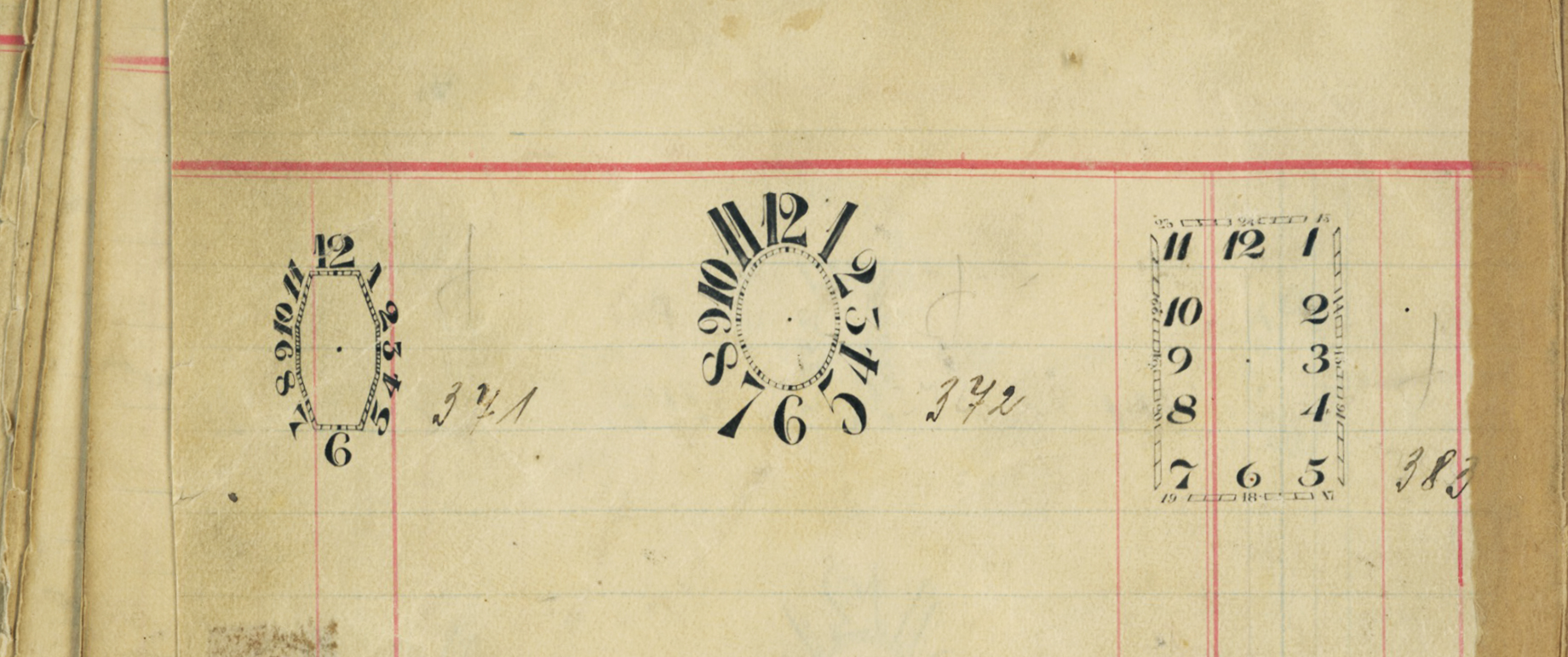
1930–1940
1930-1940. Inspiration Bauhaus? Reduced dial design.
Whether the dials of the 1930s were inspired by the Bauhaus has occupied STOWA for many years. Above all, whether there was a direct connection between the state school of design (1919-1933) and the design of the watch companies that existed at the time. STOWA was active at the time of the Bauhaus (from 1927) and also produced watches in what is widely known as the Bauhaus style. In the meantime, it is clear that the watches, which are today called designed in the Bauhaus style, all originate from the time from about 1937. The reports of contemporary witnesses and clear photographic material (published here for the first time) prove that a simpler dial design was implemented only after the end of the Bauhaus. That the dial design of the 1930s was nevertheless influenced by the Bauhaus and its trends is, however, very obvious. When asked, for example, who designed the dials at Weber & Baral, the son of the company's founder and long-time managing director, Mr. Karl D. Weber, provided some very interesting information. At that time his father Arthur Weber got the inspiration for new models from the current fashion, new carpet and wallpaper patterns as well as other things of the daily life (e.g. furniture, lamps etc.) which were subject to the time trend. From these, together with his designers and printers, he then developed new dial designs every day. So, in principle, he was the initiator and creator of the original dials of the 1937 STOWA and 1937 Lange & Söhne watch.
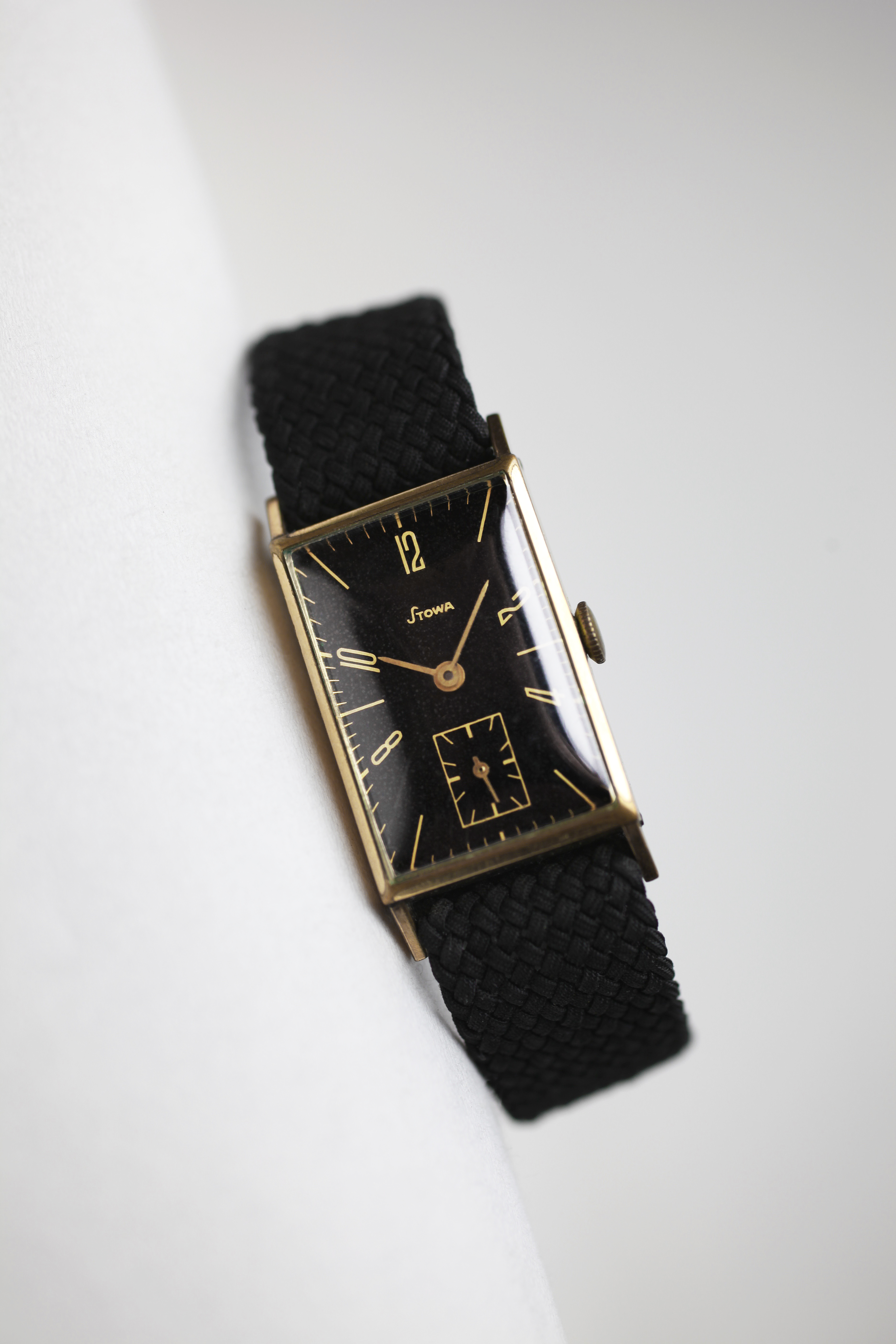

1940–1950
1940-1950. precision. Dials for military watches. Technical and functional.
The requirements for functional wrist and pocket watches for the military determine the production of Weber & Baral from about 1940. Dials for service watches, as well as the well-known large pilot watches are produced for all renowned watch brands: Lange & Söhne, Wempe, IWC, Laco and STOWA.
After the war, there are hardly any machines left and in order to be able to produce anything at all, one makes a virtue out of necessity. With the know-how from the dial design, one develops a series of jewelry pendants made of silver, which one can sell very successfully and in large numbers. The desire of customers for something "decorative" is great after the war. Many lost everything during the war. The beginning of a functioning production is made again, many employees can continue to earn their living at Weber & Baral. At the beginning, wages were paid in two ways, one in cash (which could not be used to buy many daily necessities due to lack of availability) and the other in commodities, which was an important reason for many to work for the company. Good contacts and personal commitment made it possible for Arthur Weber to organize natural goods as part of the wages again and again.
At the end of the 1940s, the company produced, among other things, a series of
STOWA watches, the so-called Armee Francaise, about 2000 dials.
The watches from this are a reparation payment to France.
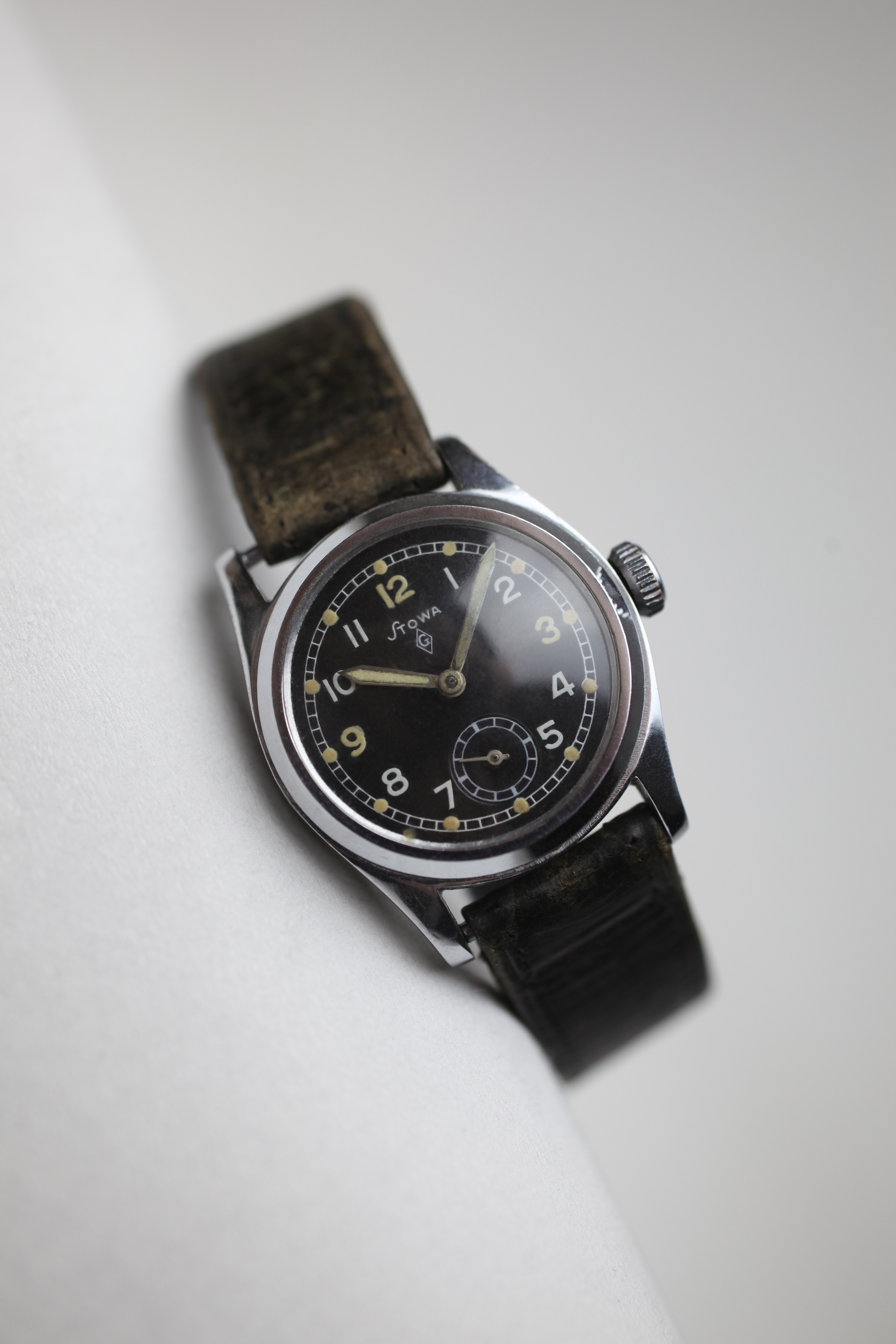
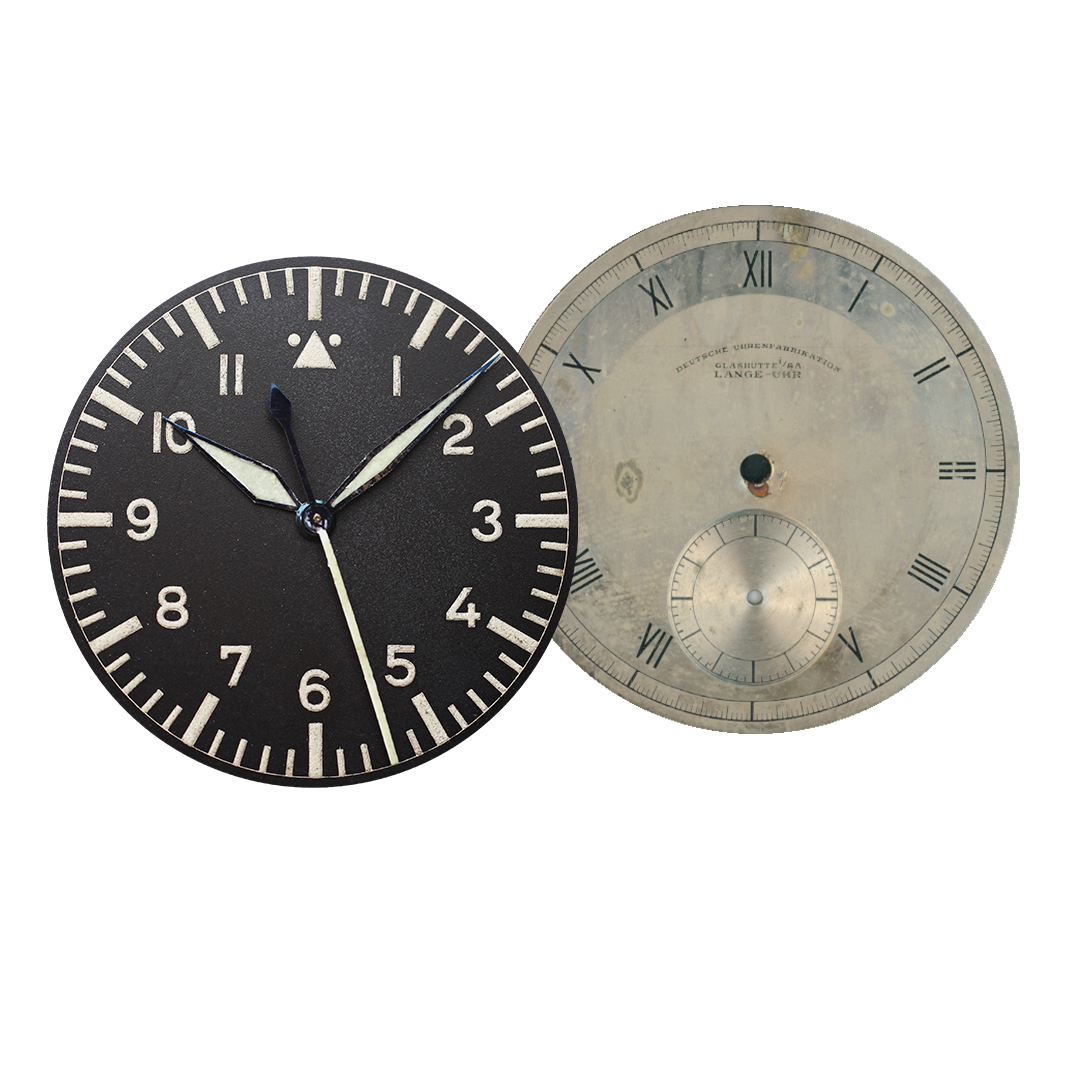
1950–1960
1950-1960. Applications and color. Elaborate dials with real metal numbers.
In the 1950s, people become a little more colorful and work a lot with applications. Applications are called numbers and indexes made of real metal, which are pinned on the dial. They allow a three-dimensional dial and thus completely different effects than the previously common two-dimensional dials (which were usually just simply painted or galvanized and printed). Many dials are elaborately lacquered in three or even four colors and feature numerals and/or index applications.
In combination with domed dials, it is now also possible to make watches appear visually flatter. The curve allows the bezel of the case to be produced flatter, and high-arched glasses made of plastic support this optical trick. With such a high watch glass and domed dial, it is possible for the case maker to make the side view visually flatter.
Unusual concepts such as skeletonized dials are also making their way into the collections of watch manufacturers.
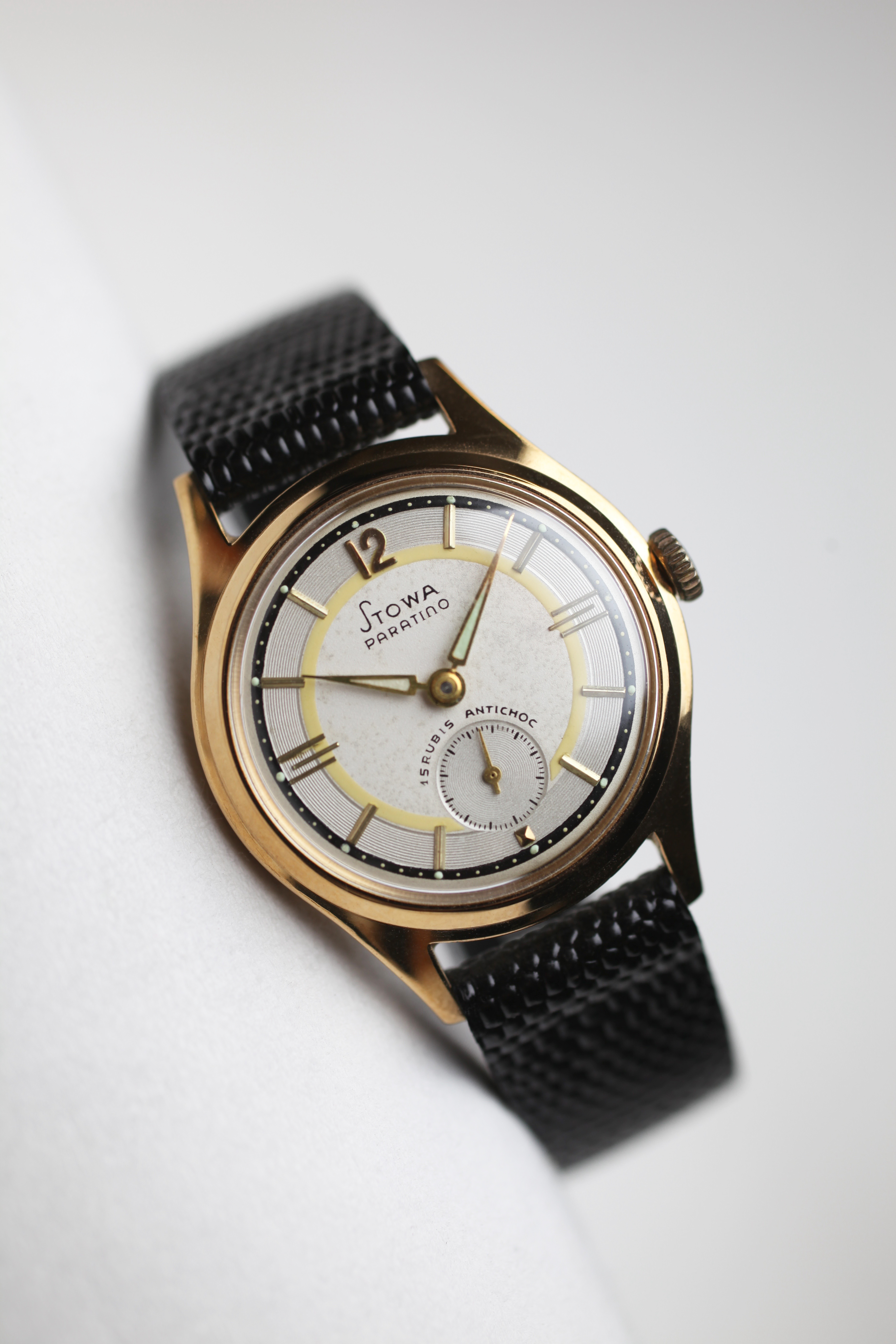
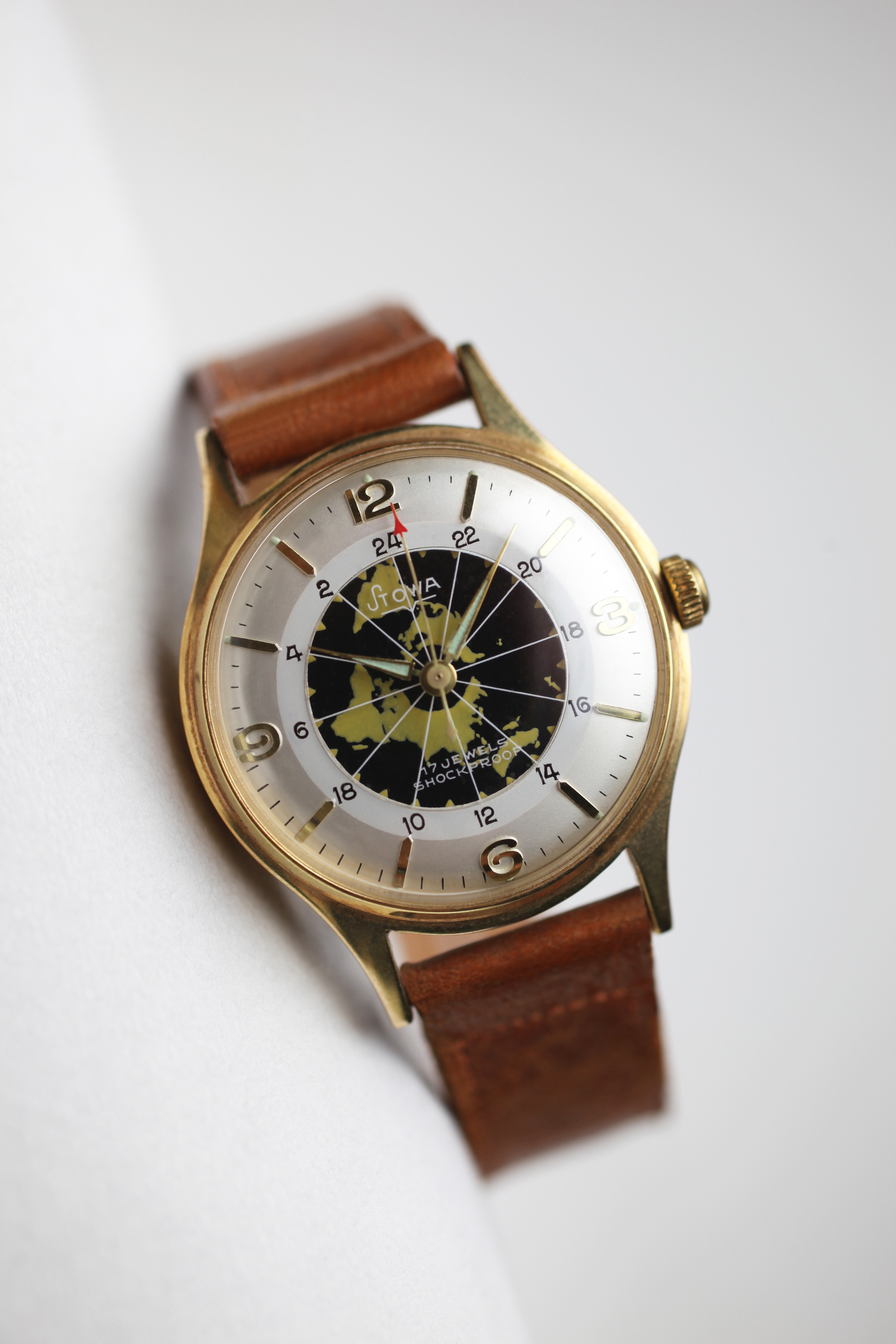
1960–1970
1960-1970. Diamondizing. Simple and plain dials with lines.
A second era of simplicity or simple design begins. While in the 1930s there were straight-line numbers and scales (in the so-called Bauhaus style), now, from a design point of view, it is reduced even further. Many dials now have only a few lines to divide the time. Diamondizing comes into fashion. A diamond tool is used to diamond a line or fantasy pattern into the metal dial. Technical explanation: If you polish the diamond cutting edge of a tool (e.g. an engraver's graver or lathe chisel), this tool, if used correctly, will make a highly polished cut. The resulting gloss level can hardly be produced by any other method and diamond cut surfaces do not require any further polishing - they are absolutely perfect!
Even today, people still like to use this method, especially for curved dials. Exactly at the curve of the dial the diamond cut is made, thus it has optically a depth and width. If the basic material of the dial is galvanically refined beforehand, you get a two-tone dial as a result.
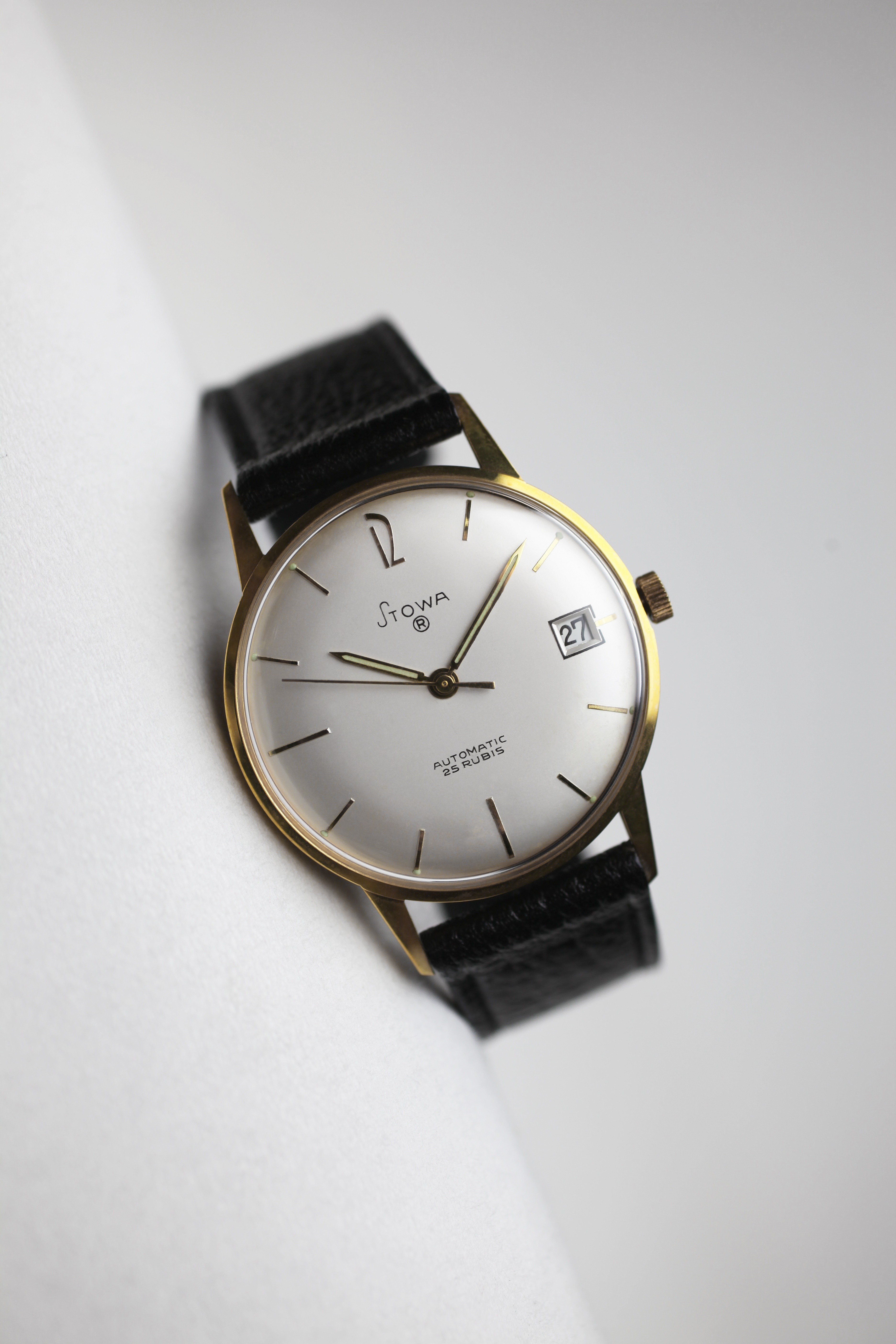

1970–1980
1970-1980. Embossing applications. Digital.
In contrast to the embossed applications of the 1950s, there was now a greater reliance on the production-related simpler embossing of numbers and indexes. In contrast to the time-consuming application of, for example, twelve individual numbers (which previously had to be produced at great expense), all 12 numbers or indexes are now embossed at once in a single operation. This results in an enormous cost reduction.
Many of the 1970 dials are very colorful and sporty. In addition, one finds very often embossed luminous numerals and luminous indexes. Sometimes, a recess is already stamped into the numbers and indexes (to fill them with luminous material, for example). An additional diamond cut on the indexes or numbers gives these dials a very special effect.
In the production of dials, the technical development over the decades can be seen very clearly. Step by step, all new process techniques available on the market are used. As soon as new, innovative techniques come from the jewelry industry, for example, attempts are made to integrate them into the designs, materiality and surfaces of dials.
With the advent of the quartz boom, people are also trying to adapt the electrical, digital display to mechanical watches. One constructs, for example, jumping disc mechanisms. Especially PUW and Otero (raw movement manufacturer from Pforzheim) are active.
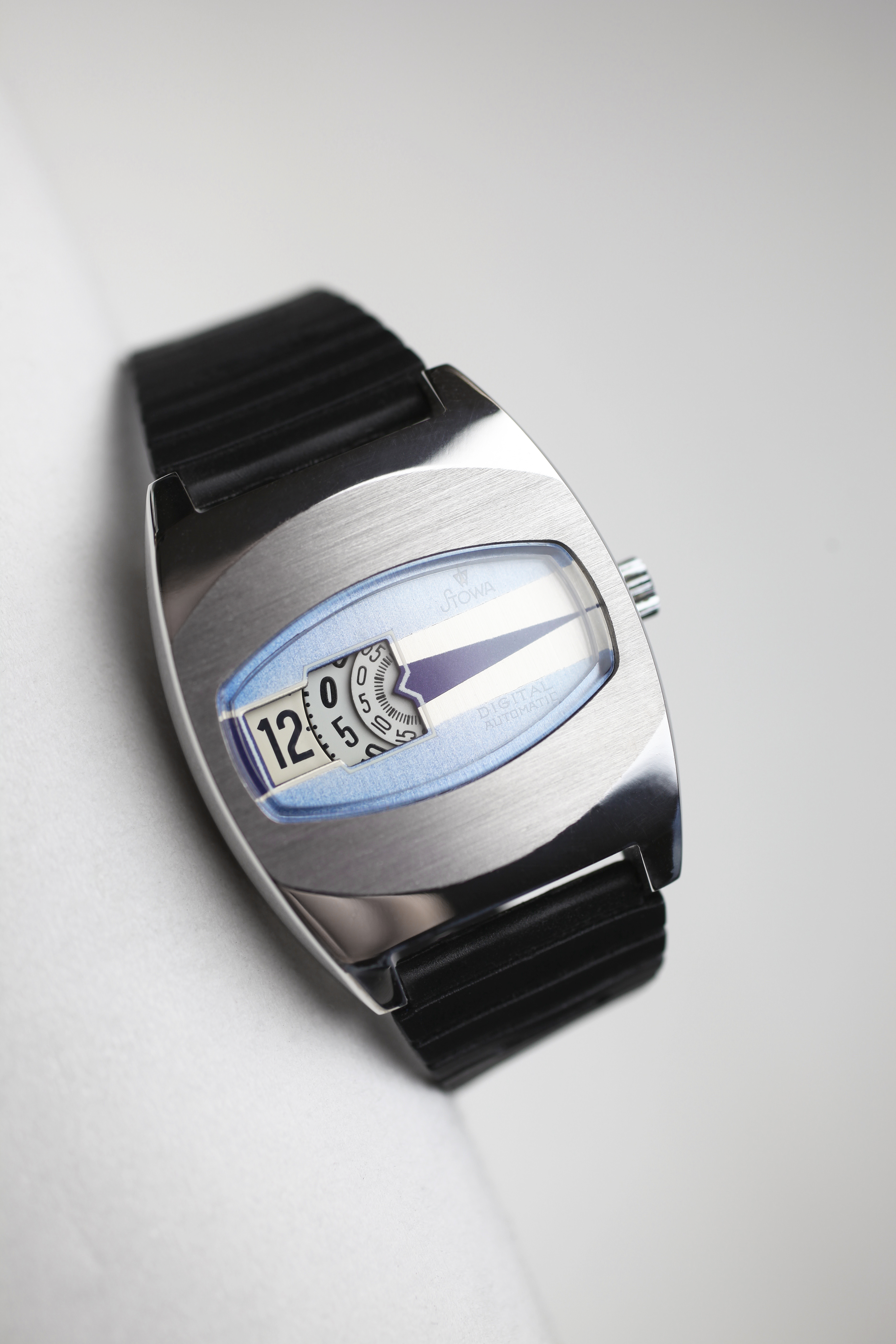
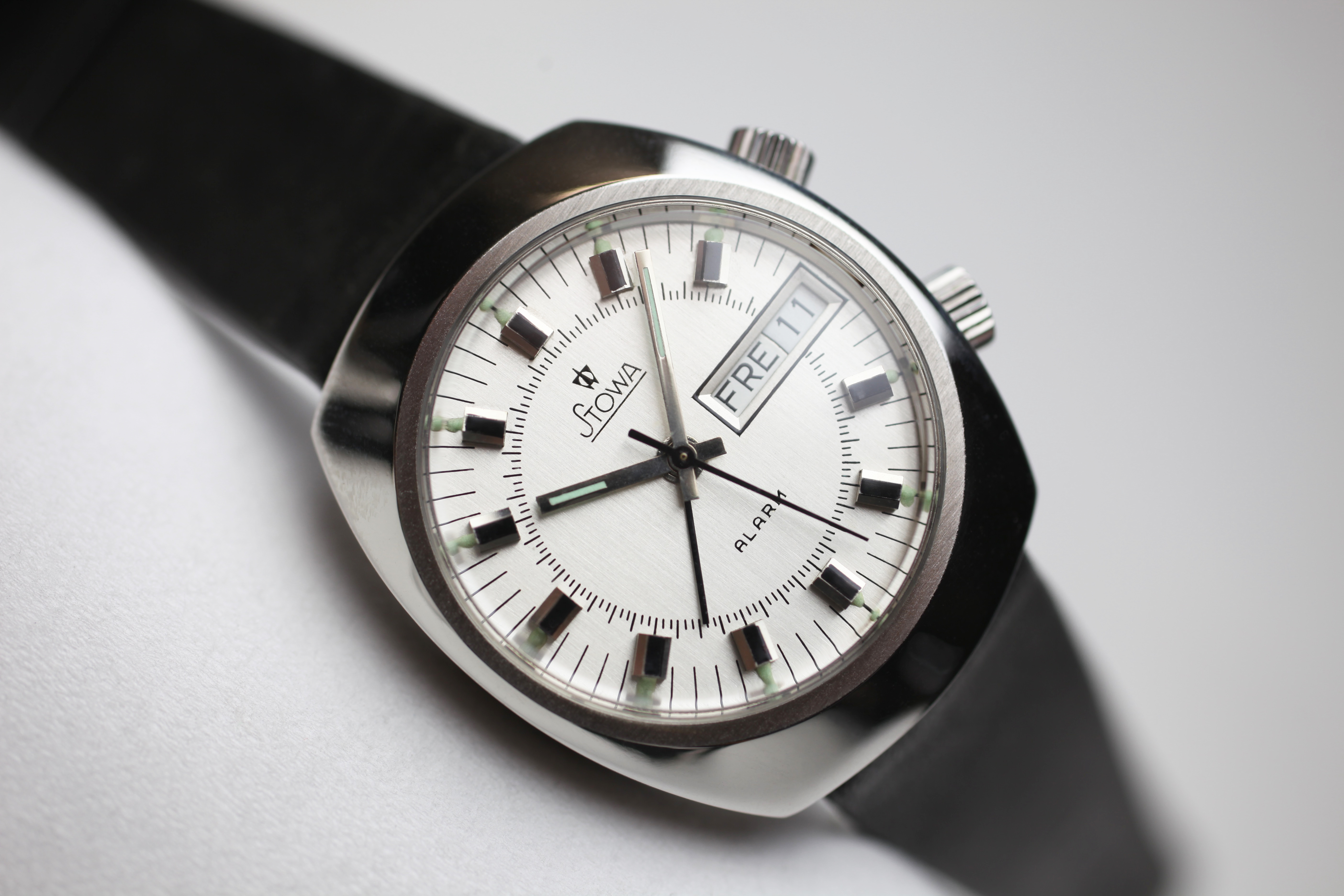
1980–1990
1980-1990. Replaceable. Nothing new.
The 1980s are characterized by electronic (quartz) watches. The watch industry - especially the mechanical sector - has problems. The dial industry in Pforzheim makes many inexpensive dials for local watch companies, but also still for worldwide export. A lot of it comes down to price. There are still no brands that think about, execute and protect individual and independent designs.
Goldstadt Pforzheim continues to successfully produce gold cases and gold bracelets and sells them worldwide. The dials that are used are generated from all possible epochs. It is more or less recycled from the fund of the last decades.
Meanwhile, embossed dials with e.g. guilloche or fabric patterns are technically perfected and one tries to imitate very high quality dials (a real guilloche dial can cost up to several thousand Euros). The steel engraver as a profession is the true artist in dial making at this time. For days at a time, he engraves these patterns into the Pfaff - which is the positive mold of a press tool. Then this Pfaff is stamped into the die - negative form of the pressing tool. After that, it is possible to emboss large numbers of pieces very quickly and affordably, which have a finished surface.
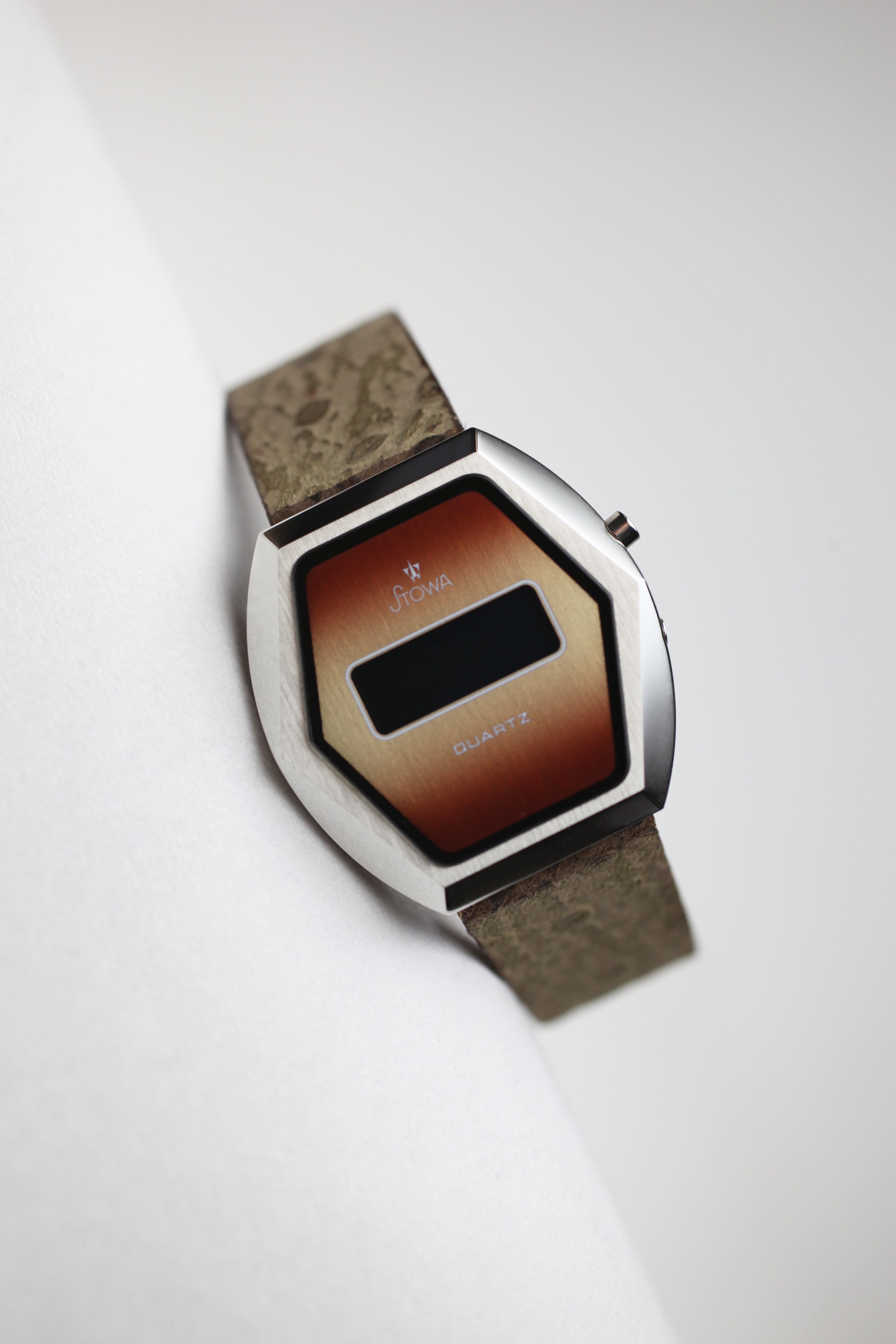

1990–2020
1990-2020. brand identity.
As early as 1990, when Jörg Schauer started his own business building one-of-a-kind watches, he also bought dials from time to time from another Pforzheim dial manufacturer, Bock & Schupp. It is astonishing that at that time, dials of big brands could still be bought quite openly and freely in the once a week factory sale. I.e. the designs of the companies were not reserved or protected at that time. However, this was soon to change. After more and more brands realized that design can be an important unique selling point and differentiator, from now on all dial designs were only used exclusively. The following years are characterized by remakes of old historical watches, which every traditional company has in its collection or museum. This trend has continued unchanged for almost 25 years. A style of its own, as it developed and sometimes radically changed every few years from 1920 to 1980, does not really exist anymore. Apart from a few exceptions, e.g. Alain Silberstein/France or the company Ikepod/Switzerland.
But then in 2015 STOWA presents a new innovative and intuitively readable dial for the model Rana. Designed by the world-renowned designer Hartmut Esslinger. For the first time, the passage of time is displayed not only qualitatively but also quantitatively. Rising dynamic dots, the so-called dynadots are created and give the watch a completely new face.
